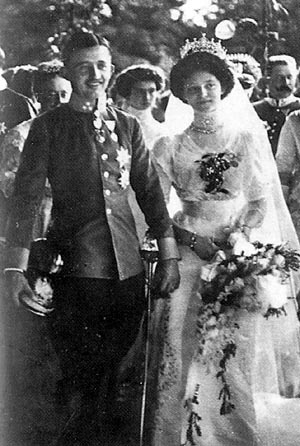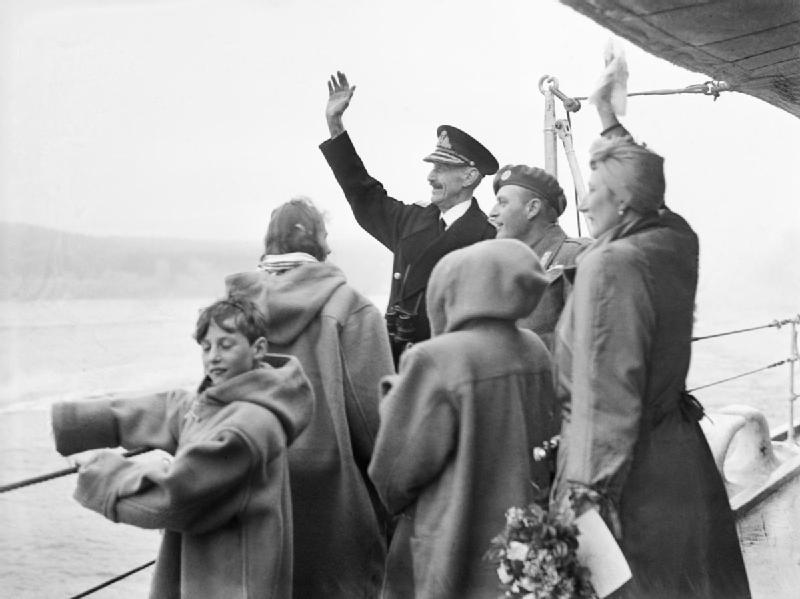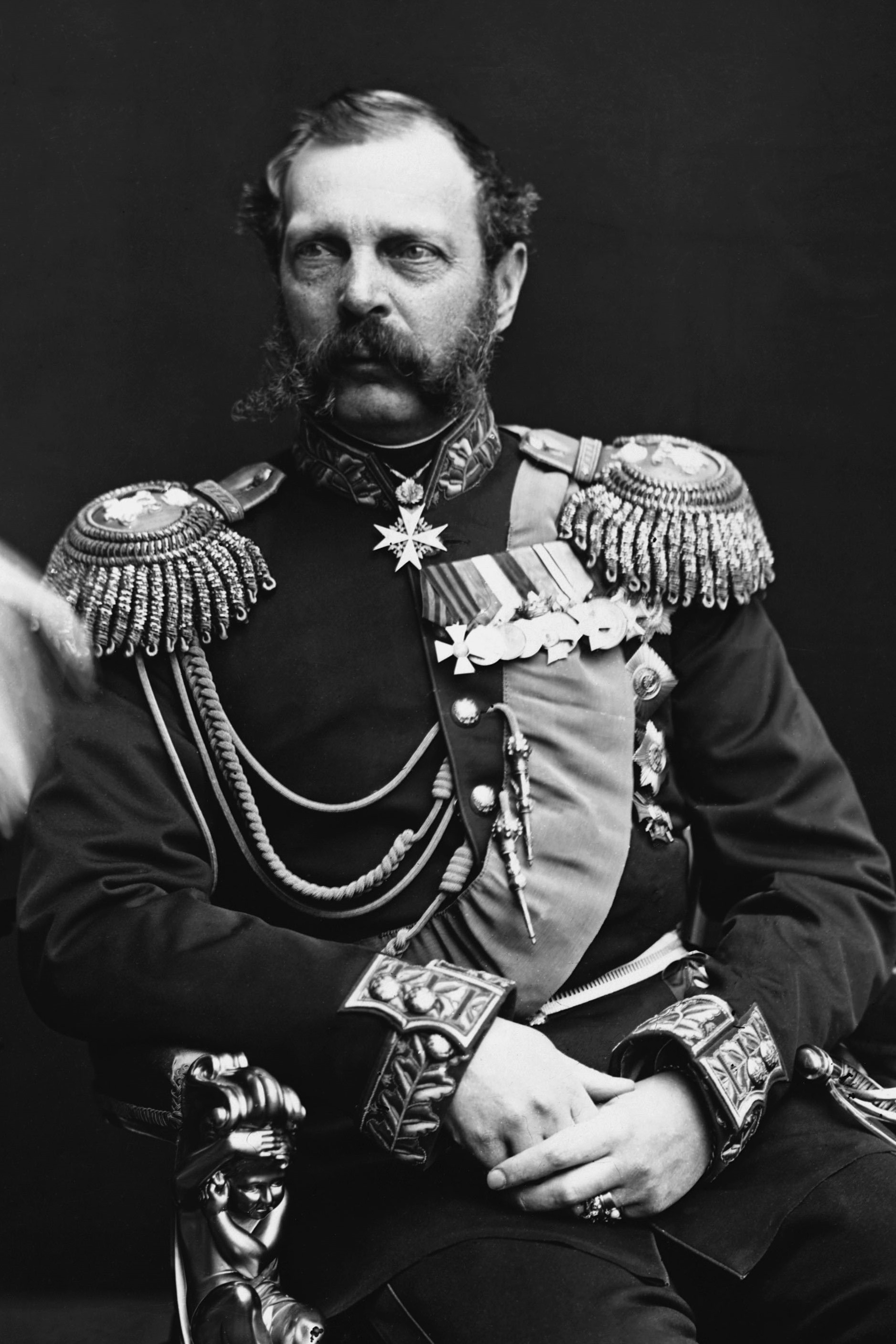by Susan Flantzer © Unofficial Royalty 2014

Karl I, Emperor of Austria; Credit – Wikipedia
On October 3, 2004, Pope John Paul II beatified Karl I, the last Emperor of Austria, and he is known as Blessed Karl of Austria. Beatification is the third of four steps toward sainthood in the Roman Catholic Church. On January 31, 2008, the Roman Catholic Church, after a 16-month investigation, formally recognized a second miracle attributed to Karl I which is required for his canonization as a saint. However, no word on his canonization has been forthcoming.
Karl’s beatification in 2004 was not without controversy. Although Karl was a devout Catholic, some of his actions have been questioned because they do not seem saint-like. During World War I, when Karl was Supreme Commander, the Austrian army used poison gas on the Italian front. In addition, Karl was accused of being a liar. As the war ended, Karl deserted Austria’s ally Germany and secretly attempted to make peace with France. When news of this was leaked, Karl denied all involvement. However, the French published letters from him proving his involvement. Furthermore, after the war, Karl attempted twice to regain the throne of Hungary which he had also formerly held, resulting in the deaths of many in street fighting. The Roman Catholic Church’s view is that Karl showed “heroic virtue” by being the only leader during World War I to put his faith first when making political decisions.

Many churches in Austria have portraits of Blessed Karl of Austria. This altar dedicated to him is in the Augustinerkirche in Vienna, the parish church of the Austrian Imperial Family; Photo Credit – © Susan Flantzer
Karl Franz Joseph Ludwig Hubert Georg Otto Marie was born an Archduke of Austria on August 17, 1887, at Persenbeug Castle in the current Austrian state of Lower Austria. His parents were Archduke Otto Franz of Austria and Princess Maria Josepha of Saxony. Karl’s father, Archduke Otto Franz, was the second son of Archduke Karl Ludwig of Austria, the younger brother of the Emperor of Austria at that time, Franz Joseph I.
Karl had one younger sibling:
- Archduke Maximilian Eugen of Austria (1895–1952), married Princess Franziska von Hohenlohe-Waldenburg-Schillingsfürst, had issue

Archduke Otto Franz and his family; Credit – Wikipedia
Karl had a very religious upbringing and spent his early childhood years traveling with his father’s army regiment. He attended the Schottengymnasium in Vienna, a public secondary school, which was an unusual occurrence for a member of the Imperial Family. Karl served in the military from 1903-1906, mostly in areas of Bohemia. From 1906-1908, he served in the military in Prague and also attended Charles-Ferdinand University there, studying law and political science.
On October 21, 1911, Karl married Princess Zita of Bourbon-Parma at Schwarzau Castle, an Austrian home of Zita’s family. Both Zita and Karl were devout Catholics and on the day after their wedding, Karl told Zita, “Now, we must help each other to get to Heaven.” The couple had eight children. Their oldest child Otto, who was Crown Prince during his father’s short reign, was the longest surviving of their children and died on July 4, 2011, at the age of 98.

Karl and Zita on their wedding day; Photo Credit – Wikipedia
Karl and Zita’s children:
- Crown Prince Otto (1912 – 2011), married Regina of Saxe-Meiningen, had seven children
- Archduchess Adelheid (1914 – 1971), unmarried
- Archduke Robert (1915 – 1996), married Margherita of Savoy-Aosta, had five children
- Archduke Felix (1916 – 2011), married Anna-Eugénie of Arenberg, seven children
- Archduke Karl Ludwig (1918 – 2007), married, Yolanda of Ligne, had four children
- Archduke Rudolf (1919 – 2010), married (1) Countess Xenia Tschernyschev-Besobrasoff, had four children; (2) Anna Gabriele of Wrede, had one child
- Archduchess Charlotte (1921 – 1989), married George, Duke of Mecklenburg, no issue
- Archduchess Elisabeth (1922 – 1993), married Prince Heinrich Karl Vincenz of Liechtenstein, had five children

Karl and Zita with their children; Photo Credit – Wikipedia
In 1889, after the suicide of Crown Prince Rudolf, the only son of Emperor Franz Joseph I, the next heir was Karl’s grandfather Archduke Karl Ludwig, with his elder son Archduke Franz Ferdinand. the second in the line of succession. There have been suggestions that Karl Ludwig renounced his succession rights in favor of his son Franz Ferdinand. However, an act of renunciation was never formally signed and Karl Ludwig was never officially designated heir to the throne. He was only three years younger than Franz Joseph and not a realistic choice. When Karl Ludwig died in 1896, Franz Ferdinand became the heir to his uncle’s throne.
Archduke Franz Ferdinand was the heir until his assassination on June 28, 1914, an event that was one of the causes of World War I. Archduke Franz Ferdinand had been allowed to make a morganatic marriage with the condition that the children of the marriage would not have succession rights. Upon Franz Ferdinand’s death, Karl became the heir. He succeeded to the throne upon the death of Emperor Franz Joseph I in 1916.

Funeral Procession for Emperor Franz Joseph, in front: Zita and Karl with their oldest son Otto; Credit – Wikipedia
At the end of World War I, the armistice required that the Austrian-Hungarian Empire allow for autonomy and self-determination of the government of its various ethnic populations. The various areas proclaimed independence and by October 1918 there was not much left of the empire. On November 11, 1918, the same day as the armistice ending World War I, Karl issued a proclamation in which he recognized the rights of the Austrian people to determine their form of government and released his government officials from their loyalty to him. On November 13, 1918, Karl issued a similar proclamation for Hungary. Karl did not use the term “abdicate” in his proclamations and would never admit that he abdicated.
On March 23, 1919, Karl and his family left for Switzerland. On April 3, 1919, the Austrian Parliament passed the Habsburg Law that forbade Karl or his wife Zita from returning to Austria. The law also prevented other Habsburgs from returning to Austria unless they renounced all intentions of claiming the throne and accepted the condition of living as ordinary citizens. On the same day, all noble titles were abolished. In 1921, Karl returned to Hungary twice in attempting to regain the throne of Hungary. After the second attempt, the Council of Allied Powers exiled Karl and his family to the Portuguese island of Madeira.
In March 1922, Karl caught a cold that developed into bronchitis and then pneumonia. After suffering two heart attacks and respiratory failure, Karl died on April 1, 1922, at the age of 34. Due to the Habsburg Law, Karl could not be buried in the Imperial Crypt in Vienna. He was buried at the Church of Our Lady of Monte on the island of Madeira in Portugal. His heart was buried in the Loreto Chapel at the Muri Abbey, a Benedictine monastery dedicated to Saint Martin of Tours, near Basel, Switzerland. When Karl’s wife Zita died in 1989, she was buried in the Imperial Crypt in Vienna, Austria, but requested that her heart be buried with her husband’s. Two of their sons, Rudolf and Felix, are also buried at Muri Abbey.

Tomb of Karl I, Emperor of Austria at the Church of Our Lady of Monte on the island of Madeira in Portugal; Credit – Wikipedia
In the Imperial Crypt (Kaisergruft) in Vienna, Austria, the traditional burial place of the Habsburgs, there is a memorial to Karl near the tomb of his wife Zita. (Photo below)

Memorial to Karl I, Emperor of Austria in the Imperial Crypt; Credit – © Susan Flantzer
This article is the intellectual property of Unofficial Royalty and is NOT TO BE COPIED, EDITED, OR POSTED IN ANY FORM ON ANOTHER WEBSITE under any circumstances. It is permissible to use a link that directs to Unofficial Royalty.
Austria Resources at Unofficial Royalty

























